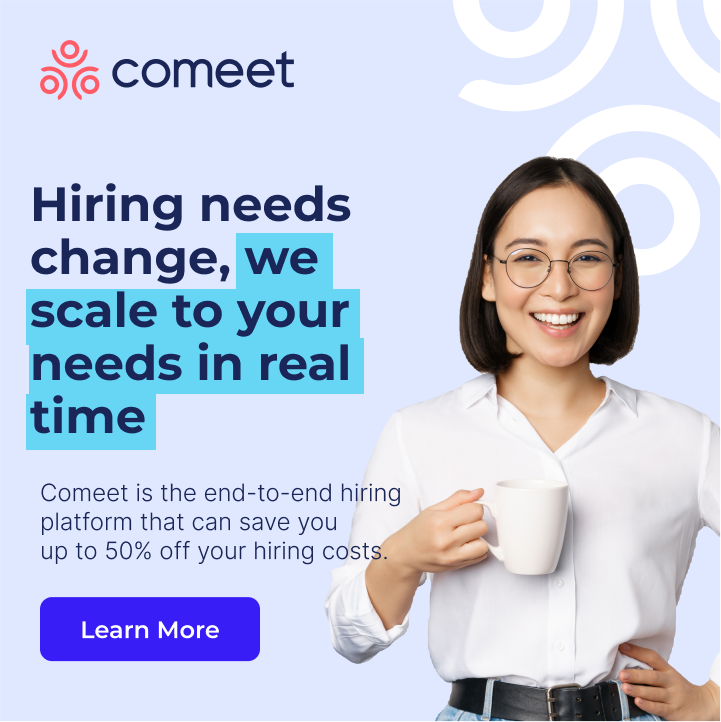As senior business leaders, we are always focused on looking forward, forecasting and building long-term business strategies must maintain and grow our organizations, while taking advantage of the bull marketplace. While building out business forecasting models and taking time to evaluate how current and future economic conditions will impact our business is important,, CFOs and all executive leaders need to focus on organizational talent too, to execute those plans and strategies.
That can be a challenge especially when we can get caught up in the bigger picture, often overlooking that we need qualified, eager and engaged people in our offices to execute those plans long term and day to day.
When it comes to biggest fears and roadblocks that impact an organization, the Conference Board found in 2017 that the topic of talent is a hot-button issue for the CEOs like myself as well as the entire leadership team. One of my favorite talent resources comes from the Conference Board’s annual CEO survey. Their 2017 report found that while talent is important for an organization, holding 2 of the top 4 spots, companies also need to be flexible, nimble and prepared for shifting economic conditions. The top four hot-button issues are listed as follows:
- Fear of Global Recession
- Talent Development
- Cybersecurity
- Talent Retention
Talent is certainly an issue of serious concern for CEOs and other members of executive leadership. It’s clear that we, understand it’s not enough to hire the best performers for our organization – we must also have retention and employee development and growth programs that can flex up or down depending on the organization and economy’s specific needs.
5 Keys to Navigating Talent In Uncertain Times
#1 – Focus on Building Internal Talent Pipelines
By focusing on building internal talent networks and champions, we can foster engagement and excitement with our organization’s best rewarding employees for their hard work and dedication, offering them opportunities to grow within the organization. These internal champions are familiar with our company culture, organizational expectations and can move quickly thanks to their familiarity with the people, processes, and expectations by leadership as well as the rest of the organization.
In order for internal talent development to be most effective, companies need to have focused conversations with high performers within their organization, talking with them first to understand if the employee’s personal and professional aspirations are in line with the larger organization. Once this is identified, leadership can work on direction with these high-potential employees to craft a specific development and training program to prepare them for the next phase of their career with your company.
#2 – Understanding the Larger Impact as Well as the Minutia of Human Capital
The concepts of talent and human capital for your organization, however you choose to refer to them, are important regardless of whether we are working in a bull or bear market. Employees have a far-reaching impact on the growth and scalability of your organization which is one of the reason’s why Comeet is focused on collaborative hiring processes for companies of all sizes. While it is important to focus on the broad impact that talent can have on your business, it is equally important to focus and keep in mind the small details especially when it comes to employee engagement, culture and the impact of frontline leaders. A single location’s profitability can be derailed by the actions of a single manager which is why the executive team must make time to be visible and available to employees for all levels, types, and tenures.
#3 – The Power of Workforce Forecasting and Accompanying Talent Development
As an organization scales and grows, so must its headcount and along with that payroll hours to support the larger organization. Forecasting tools and methodologies exist to help executive leaders develop growth models and strategies. Selecting the wrong headcount and payroll hours mix can have far-reaching consequences not just on your profitability for the short term but the long-term performance of all employees including your high performers.
Organizations that are growing or scaling quickly will need to invest in workforce forecasting and a customized talent development plan to help address talent development gaps that exist or will exist as your organization grows.
#4 – A Focus on Hiring and Development Diversity
It is not enough to be focused on diversity in terms of HR compliance. More diverse teams drive innovation, creativity and new ideas that push teams forward. Leveraging diversity as far your talent and human capital strategy are concerned can be accomplished in many different ways. It could mean committing to hiring a more diverse team including women and minorities for all organizational levels and departments including your managers as well as the board of directors. Diversity can also include hiring candidates with different or unusual backgrounds and experiences including going beyond specific business or university alumni programs.
Workplace diversity and hiring are important as it elevates your business in ways that might not always be apparent or direct. Work with your human resources leadership and employees to determine the right type of diversity programs and initiatives for your organization.
Dive in further with our video series on diversity, equity, and inclusion in hiring:
- Part 1: Building a diverse pipeline
- Part 2: Defining diversity and neurodiversity
- Part 3: Recruiting for diversity
#5 – Leveraging the Contingent Workforce to Fill Gaps and Scale Quickly as Needed
Organizations that can move quickly exhibit flexibility are the ones who not only will win the war for talent but can capitalize on fast-moving changes in the local and global economy. Technologies like Comeet improve time to fill, helping you to scale quickly, whether you are adding permanent or contingent temporary workers. Best in class organizations not only hire quickly but can collaborate well internally with different teams and organizational partners.
However you choose to grow and scale your organization is uniquely your own, but the challenges for C Suite leadership across industries, company size and geography remain the same. The topic of talent the recruiting, development, and retention processes are a fundamental component that cuts across organizations of all levels.
Are you looking to start your hiring process today? Comeet can help. Check out to our pricing plans learn more about how we can redefine the way you recruit new talent. Or just drop your details below and we'll get back to you promptly.





























